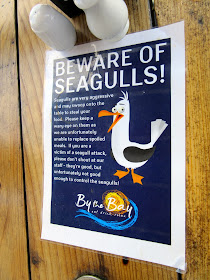Our weeklong tour of Cornwall, England was
sweeping eastward again, passing through the counties of Devon and Dorset on
our way back to London, but there was still much more to see. The day ahead
promised a visit to a village with a history of smuggling, a working
Benedictine abbey, and a popular seaside resort.
 |
| Polperro, Cornwall |
But the main attraction in Polperro is the picturesque village itself.
From Polperro we had an opportunity to walk the South West Coast Path (2 miles) to Talland Bay, a popular landing spot for smugglers. We chose to stay with the motor coach and meet the walkers at the Talland Bay Beach Café where I said farewell to Cornwall with a delicious scoop of Roskillys organic salt caramel ice cream (made with local sea salt).
While driving through the neighbouring county of Devon we stopped at Buckfast Abbey, a Benedictine monastery founded in 1018.
Behind the abbey church are three gardens: the Lavender Garden with 100 different varieties of lavender; the Sensory Garden based on medieval pleasure gardens; and the Physic Garden, with plants that would've been grown in a monastic herb garden.
Our next stop was the resort town of Lyme Regis at the heart of the Jurassic Coast, designated by UNESCO as the Dorset and East Devon Coast World Heritage Site. The 95 miles of exposed cliffs along this coastline are rich in fossils formed across 185 million years of Earth’s history.
Fossil hunting is a popular pastime in Lyme Regis and the street lamps along Marine Parade are styled after the shell of an ammonite, an extinct marine mollusk.
Lyme Regis was the setting for Jane Austen’s
last completed novel, Persuasion, and The French Lieutenant’s Woman by John
Fowles. I walked out along the outer wall of the Cobb (harbour) where Austin’s
Louisa Musgrove took a tumble resulting in a concussion and Meryl Streep gazed
out to sea in the film version of Fowles’s novel. It was a beautiful summer day
but the strong gusts of wind felt unseasonably cold.
While families sunned on the sandy beach or frolicked in the surf, I snacked at By the Bay on some cheese and olives and a refreshing Devonshire Elly (white wine with elderflower pressé and soda). A seagull kept a close eye on my plate.
The north end of Town Beach is covered in pebbles to protect Marine Parade while the end nearest the Cobb has sand brought in from France.
On the last night of our Corners of Cornwall tour we relaxed in the quiet rural setting of The Fairwater Head Hotel in nearby Hawkchurch.
The delicious farewell dinner prepared by the hotel’s award-winning chef was capped by one of my favourite desserts, a decadent crème brûlée.
We still had one full day of travel ahead
of us before our return to London, including a visit to the cathedral city of Salisbury.
And as I promised a couple of months ago, next time I’ll finally tell you what caught the
attention of those curious cows.
More photos from this scenic corner of England can be seen on my Pinterest board England: The West Country.
Next: Salisbury, Medieval and Modern
Next: Salisbury, Medieval and Modern




















































No comments:
Post a Comment
All comments are moderated.
Note: only a member of this blog may post a comment.